Australia So Much to See


Winton - More about fossils of the Winton area, the Opal Walk, Deck Chair Theatre, Musical Fence, Arno's Wall and Artesian Water.
Winton Timeline
600 million years ago the earliest forms of life appeared according to fossil finds
93 years ago the dinosaur
tracks were formed – see Lark Quarry
10,000 years ago shows the first evidence of humans (Aboriginals) in the area
1860 the first explorers,
including Burke and Wills came and were soon followed by pastoralists
1875 the first town called Pelican Pool was at Pelican Waterhole,
although due to flooding the townsite was relocated to the present townsite with the first building being at the location of the present
bank
During the 1880s the first hospital and school were constructed
1888 opals were discovered in the area, and due to inadequate
water supplies, an artesian bore was sunk
1871 was the year of the shearer’s strike
1898 to 1899 drought caused the loss of 75,000 sheep and 4,000 cattle
Corfield and
Aside from the Matilda Visitor Centre, other places to visit in Winton include the
former shop building Corfield and Fitzmaurice which now houses a museum displaying fossils and the centerpiece; a representation of
the stampede at Lark Quarry with models of the dinosaurs at the size they would have been. This display is good introduction
to the Lark Quarry stampede story. There is also a comprehensive display of opals. Corfield and Fitzmaurice was the first
general store in Winton.
While most of us think of animals of the dinosaur era, be they marine or terrestrial, as being
huge, there were many more of the smaller species and the average dinosaur size was that of a sheep.
Deck chair theatre
Built in 1938 on the site of the original picture theatre which dated back to 1918 is the open air picture
theatre – one of the oldest still in operation. A small display showcases film projection equipment through the times the Theatre
has been operating in Winton. They also boast the world’s largest deck chair.
The Opal Walk
On the way to theatre, you can take the opal walk at Wookatook Gift and Gem. The walk is a passageway that features
a display on western
Winton’s Musical Fence
Winton’s Musical Fence was commissioned in July 2003 by the Queensland Music Festival with the Winton
Shire Council and the generous support of Ergon Energy. It was created by artist Graeme Leak with assistance from the Winton
Community.
Winton’s water supply
Artesian water is brought to the surface from 1,200 metre below at a temperature of 83º. It is cooled
in large tanks and used as the town water supply. The sulfurous odour of the water is unpleasant, but leaves no residue when
used for showing or washing clothes. Allowing the water to stand for a while in an open container produces water suitable for
drinking.
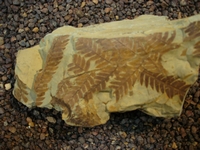
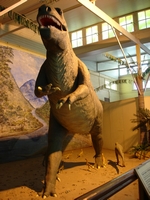
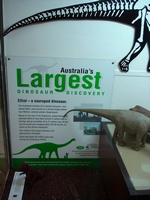
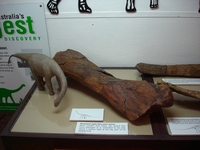
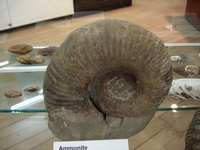
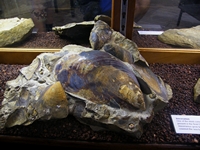
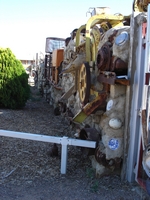
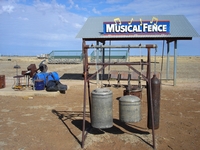
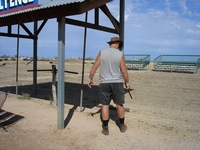
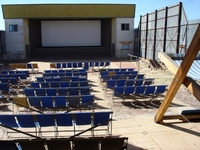
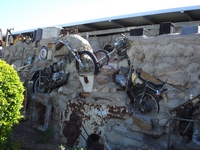
Elliot – a sauropod dinosaur
The fossilised remains if a massive dinosaur, nicknamed Elliot, were found on a remote sheep station
near Winton, central western
Based on the size of the thighbone, palaeontologists estimate Elliot to have been almost
four metres at the hips and an incredible 16 to 21 metres long. At this size he would have weighted about 20 – 28 tonne; as
much as five African elephants!
This makes it the largest dinosaur ever discovered in
Elliot lived about 95
million years ago, during the Cretaceous period.
Elliot was uncovered by grazier David Elliott and hands on fossil experiences can be undertaken at the Age of Dinosaurs. Tour
fees apply.
Since the discovery of Elliot, further discoveries of larger dinosaurs have been made in an area rich in fossils near Eromanga, including
a femur of 1.8 metres and indications that the dinosaur may have been 36 metres in length and speculation is that this animal could
have weighed as much as 100 tonne.
The recreation of the stampede shows the massive flesh eating Carnosaur towering over the fleeing smaller Ornithopods which were plant eating animals the size of sheep when fully grown, and the tiny chook sized Coelurosaurs which were hollow boned like birds and left somewhat bird-like tracks. Carnosaur means flesh (eating) lizard, Ornithopod means bird footed and Coelurosaur means hollow (boned) lizard.
Much smaller than Elliot, the sauropod this right tibia belonged to was estimated to be two metres high at the hip and ten
to twelve metres long.